Tai Chi is a form of martial art that has many well known benefits, which include helping people deal better with their feelings of anxiety. Apart from combating stress, Tai chi has been proven by a number of recent studies to improve balance, flexibility and coordination.
[the_ad_placement id=”in-text-1-type-r”]If we take a look at all of the above, you can easily grasp why this can better your survival skills: you’ll learn how to deal better with your stress, all the while improving physical abilities you need in the wilderness. We’ll deal with these issues next, but first we’ll start you off with what is tai chi.
The ancient Chinese martial art
Tai chi is an ancient Chinese practice of self-defense, but now it’s considered that there are better ways of self-defense than martial arts with fixed movements. But we’ll get there. The main recognized advantage that Tai chi has today involves minimizing stress and helping people deal better with some other health issues they may have. The reason is that Tai chi employs meditation along with its fixed forms, which makes people feel more at peace while moving.
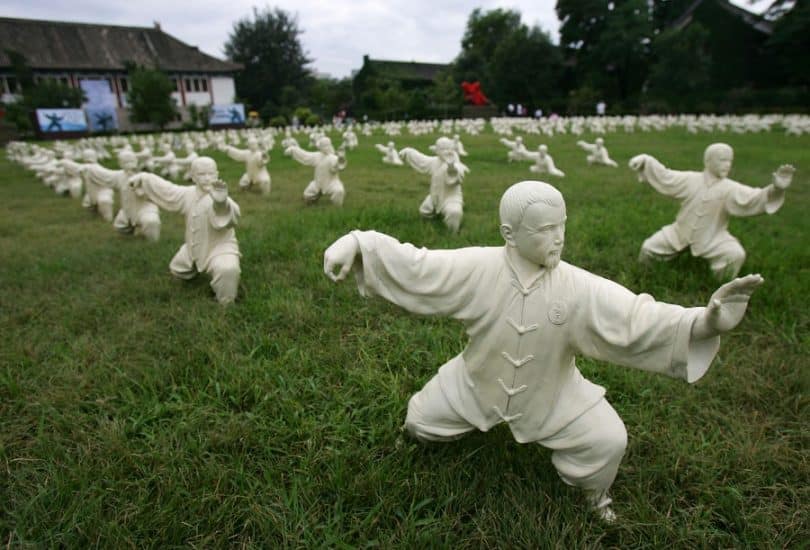
Basically, your body and mind move at the same relaxed, but controlled, pace. Many people find it difficult to meditate while sitting perfectly still, and it has been argued that doing some automatic motions when thinking will actually increase our problem-solving mindset. That’s why some topnotch students doodle when listening to lectures: it’s easier to concentrate.
But getting back to the not-so-lost art of Tai chi, you should know that it may likewise be referred to as tai chi chuan. Since it only uses gentle, slow movements, deep breathing and meditating techniques it’s considered a low-impact exercise, fit for almost anyone.
This type of fitness or exercising was once used in fighting, but now the fighting rules have changed. This is why Tai chi is also considered a non-competitive martial art. It’s more of a flowy type of exercising that promotes relaxation of the mind and body through stretching.
On the other hand, you should know that there are other styles of Tai chi which rely more on the martial arts principles rather than on the health aspects. As such, the plethora of Tai chi styles and adaptations each has its own methods, movements and variations.
Check out our other article on effective self-defense strategies to give you more options.
Is Tai chi for you?
Tai chi is a form of low-impact fitness that makes it suitable for mostly everyone, no matter whether they exercise regularly or not. Age is again not a significant factor when it comes to Tai chi, being considered great both for younger and older people the same.
As such, you may think that if you’re an active hiker or a survivalist you don’t need Tai chi. After all, you’re doing other high impact activities that are more challenging, muscle building and hence more satisfactory.
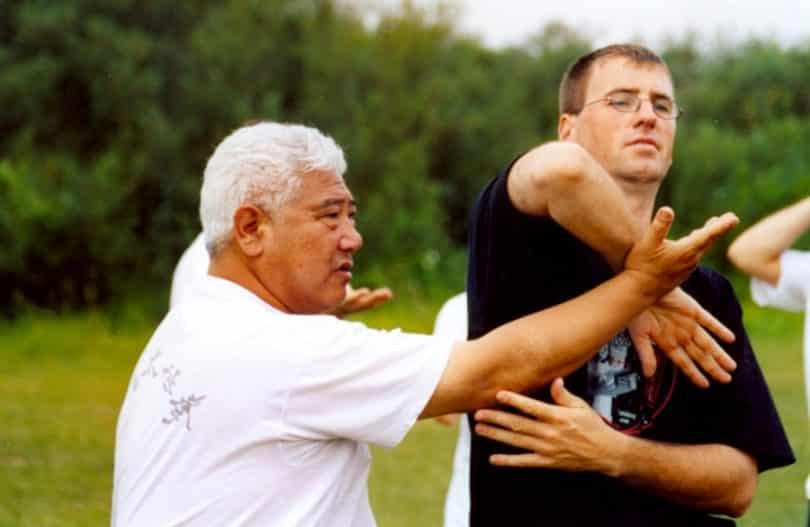
Conversely, Tai chi will help improve your flexibility and balance. The stretches it employs and the new movements are key factors when it comes to stretching your muscles. That will only help you give more when it comes to your high impact fitness.
Another advantage is that Tai chi doesn’t cost a lot of money, and you also don’t need to buy expensive equipment for it. In fact, you can do it anytime and anywhere if you need a quick stretch combined with meditation. What’s more relaxing than being on top of a mountain crest you’ve just climbed for 14 hours and then doing a Yun Shou? In translation that’s Waving hands like clouds, a movement which helps you refresh and restore, becoming one with the nature we all love.
That being said, if you’ve had a rock climbing accident and you are now just regaining your strength, gentle Tai chi movements may help you regain your range of motion and prepare your body for higher impact exercises. Nonetheless, it’s a good idea to consult your doctor before taking on some Tai chi lessons if you have:
- A baby in your belly.
- Back paint.
- Fractures
- Hernias
- Joint issues.
- Osteoporosis
It doesn’t mean that you won’t be allowed to do Tai chi anymore, it’s just that you’ll probably have to find some modifications for a few of the postures that challenge you a lot. So no White crane spreads wings move if you’re having back problems, ok?
If you want to learn more about Tai chi and other martial arts, take a look at bookmartialarts.com.
The advantages of Tai chi for survival
There are many well known Tai chi benefits, and many of them stem from ancient Chinese traditions, which purport the fact that this martial art can help:
- Increase life span for people who want to live longer and healthier.
- Improve flexibility.
- Give you stronger muscles.
- Make you less prone to a bunch of diseases, including heart problems, cancer and arthritis.
- Improve your tonus and lift your spirits, thus helping you prevent and/ or deal with depression.
Most of these advantages can be better explained through intuition rather than well documented studies. That’s because the research regarding Tai chi doesn’t deal comprehensively with these issues, seeing that the research groups aren’t very large or similar. However, any form of exercise that employs meditation will make you feel more relaxed, and stress is considered the main root of a lot of our modern day health problems.
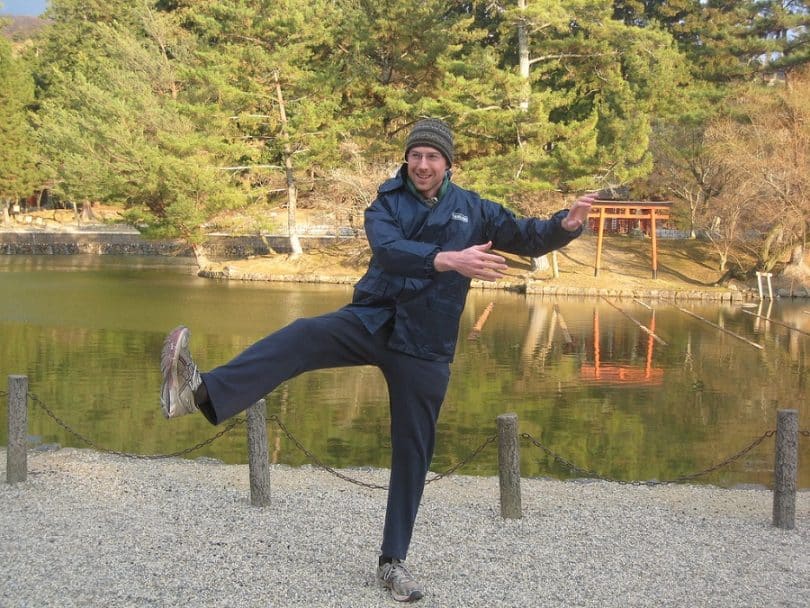
The advantages of Tai chi that have actually enough evidence to sustain themselves in the medical community are the ones we’re going to talk about below.
Improved balance
First of all, most of the studies that concern balance and Tai chi have been performed for older individuals, because falling is a significant issue for that age group. As such, falling leads to injuries like hip fractures, and is one of the most important reasons why older people die or get life long disabilities.
But if Tai chi improves the balance of the elderly, why wouldn’t it improve the balance of a strong, healthy individual in his or her prime? Besides, everyone has different objectives, and if the objective of an older person would be to prevent hip fractures and death, yours may be to become a better climber.
We all know that survival activities are actively depending on our balance, and the strength of our core muscles.
But everyone who’s a keen survivalist has pulled a muscle at least once, and that doesn’t really help with keeping your balance on shifty ground. Tai chi movements that coordinate the way you move your legs with the way you move your upper body will help you achieve better coordination in the long run, and thus get over the strain of a pulled muscle.
Improved confidence
If you manage to improve your balance, the obvious conclusion is that you notice that for yourself and ultimately improve the levels of confidence, having less fear of falling.
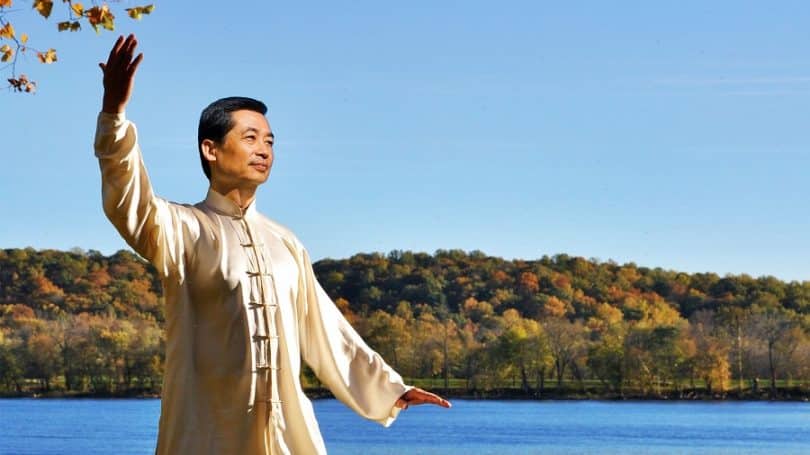
Imagine what it’s like being alone in the wilderness. It’s winter, freezing temperatures, and you’re alone having to cross a river. You find some water stretches, but you still have to keep your balance pretty well, since falling in the freezing water because of the river currents is a sure way to die. Chances are that if you don’t think you can make it, you probably won’t.
Luckily, Tai chi helps you get better balance and coordination that improve your chances of crossing that river both from a physiological and a psychological point of view.
Although that was an extreme example, there are many other more common instances that show why Tai chi is important in day to day survival conditions.
Improved endurance
If you practice Tai chi, you’ll notice improved flexibility and balance. It’s common sense that that can’t be achieved without building stronger muscles and thus increasing your endurance. Studies show that 12 weeks of Tai chi is all it takes for older people who practice Tai chi moderately to notice these benefits.
Now, imagine what your diligence can do in that respect. If you add Tai chi to your weekly fitness routine, complementing other high impact exercises, you’ll reap the advantages even faster. Remember that these test subjects are over 60 and don’t have a regular fitness routine.
Needless to say, endurance is very important in survival conditions. You may need to walk for long periods of time, which is why having stronger muscles is a real strong point for you. After a tiresome hike, you may need to climb a rocky wall, and having strong, flexible upper body muscles that don’t pull easily is what Tai chi promises.
Improved aerobic capacity
This ancient Chinese practice has also been proven to increase your aerobic capacity. This is due to the fact that there are no high-impact movements (due to the breathing techniques that accompany the movements) and you will learn to meditate.
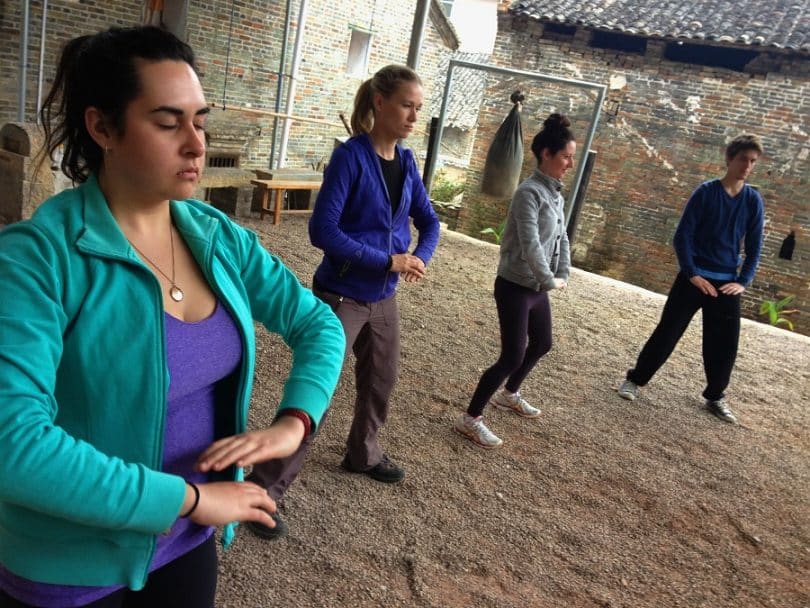
Now, increased aerobic capacity means that you can run away faster and longer after you discover a spider nest in your tent. Joke aside, having your heart work better and your lung capacity increased is an important advantage in survival conditions that require effort and endurance from your part.
Increased speed
Being able to coordinate your movements better, having an increased flexibility, strength, endurance and aerobic capacity are all reasons why your walking speed will increase too.
[the_ad_placement id=”in-text-2-type-r”]If you have stronger leg and core muscles, an increased lung capacity and a more resistant heart, you can make more effort without your body taking notice.
Walking faster is great when it comes to surviving in the wild, because it helps you shorten the length of your journey and get to your wonderful destination faster.
Reduced stress levels
Living in today’s world means that most of us are prone to stress because we live in a busy environment that doesn’t allow us the necessary time to think and just be with ourselves.
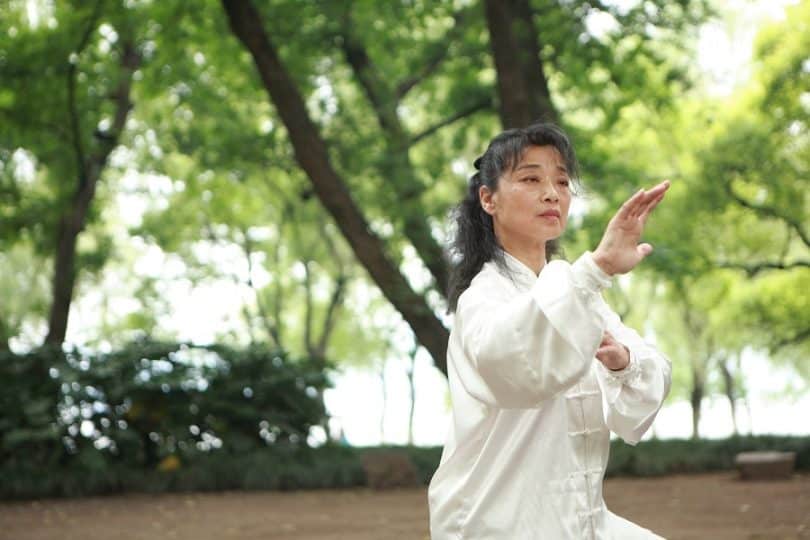
But Tai chi reduces stress because it promotes:
- Deep breathing.
- Gentle movements.
- Increased concentration.
- Self awareness.
These aren’t merely techniques you learn to do with your low impact Tai chi routine, but they build reflexes and create neural pathways that stick forever in your brain.
It’s especially significant because Tai chi creates a bond between your mind and your body with the help of these reflexes. In fact, if you match your breathing to the way you move your body, your brain will enter a state of increased alpha waves, that make you more vigilant and calm.
Surviving in the wild is all in all an activity which requires a lot of mental balance, peace and increased attention, which is why Tai chi may help you in that department too. For other natural remedies for anxiety, see our earlier article on topic.
How can you actually use Tai chi?
What if you’re in the wild and someone attacks you? Tai chi is a form of martial art, as we’ve already mentioned, which means it employs certain postures known as katas. These postures are generally considered useless in a street fight were there are no rules. And if you want to fight off a raging wild bear, there are slim chances it will fight you in the Tai chi spirit.
However, these postures create some reflexes and instincts, which may help you keep your cool in a fight and act upon your subconscious so that you can defend yourself by using your opponent’s force.
Acting without delay, in a precise, controlled manner can make the difference between life and death. So you can generate a lot of power from afar for example with the Push hands movement. Basically, you’re using your core and balance to harness the force of the wild bear and defeat it. Or you can just play dead.
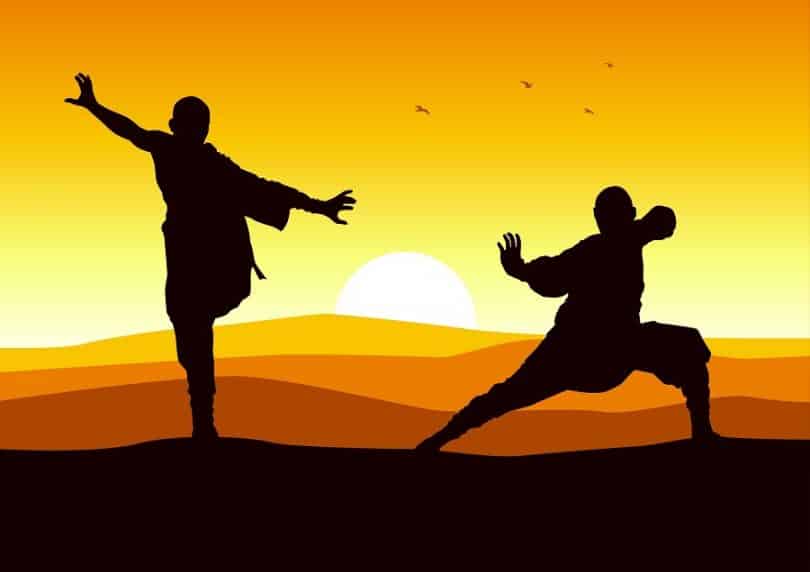
The modern forms of combat Tai chi that have recently emerged only use the basic principles of this martial art, but employ strikes from street fighting too.
That being said, it’s obvious that you’ll be no Jackie Chan anytime soon, but let’s review three Tai chi fighting katas that help improve your survival skills.
Rooting yourself
Rooting is one of the most basic principles you’ll find in Tai chi. It pretty much says it all on its own: you have to keep your balance and posture by imagining that your feet grow roots that anchor you deeply in the ground. That makes you one with nature and very stable. You’re becoming more centered and focused, the more you imagine yourself as a tree with deep roots in the ground.
Let your mind go even further and picture your hands as tree branches, that move freely yet controlled.
All this improves your balance, but also your confidence levels. Repeating this exercise during your warm up will create neural connections and reflexes that will help you to always search for your inner balance. You won’t be afraid when crossing over unstable ground or when climbing a steep wall that doesn’t have many grips.
For this to work better, don’t stay stiff, but allow yourself to move freely and at ease.
The Single whip kata
This is one of the most amazing postures in Tai chi, because it has a lot of benefits for training your muscles. Basically, you’re just going to stand in a balanced position, with your arms spread straight from your shoulders, parallel to the ground. The fingers of one arm are held in such a way that they look like a bird’s beak. Your legs are also spread apart, about twice shoulder width, and one knee is bent.
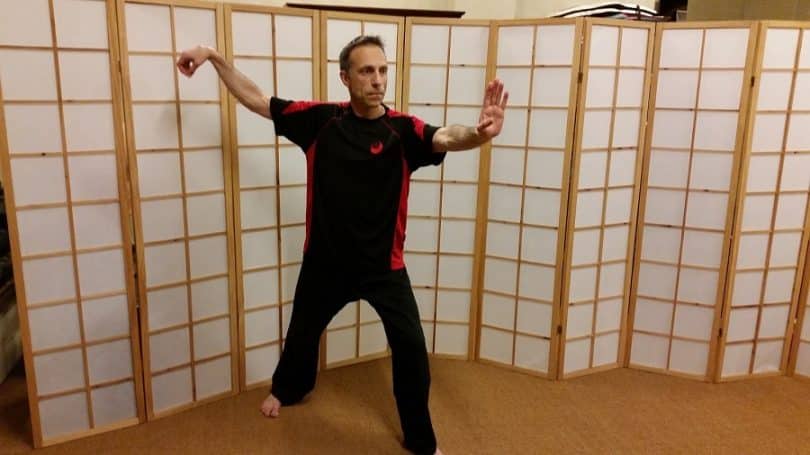
This posture:
- Works your finger muscles, tendons and ligaments when you make the bird’s beak.
- Keeps your core strong from maintaining this posture. This improves overall balance.
- Opens your hip flexors and makes you gain range of motion.
- Stretches your inner thighs, which makes you more flexible.
- Exercises your quads, making them stronger. This helps you walk more and faster.
- Strengthens your shoulder muscles, helping improve rock climbing abilities.
The White crane spreads wings kata
Your arms are in a similar position to the previous kata, but you’re now standing on just one leg. Try to shift your weight gently forward and backward, but still keep your balance on one leg. Besides, one of the arms is supposed to move faster that the other, and on a different plane.
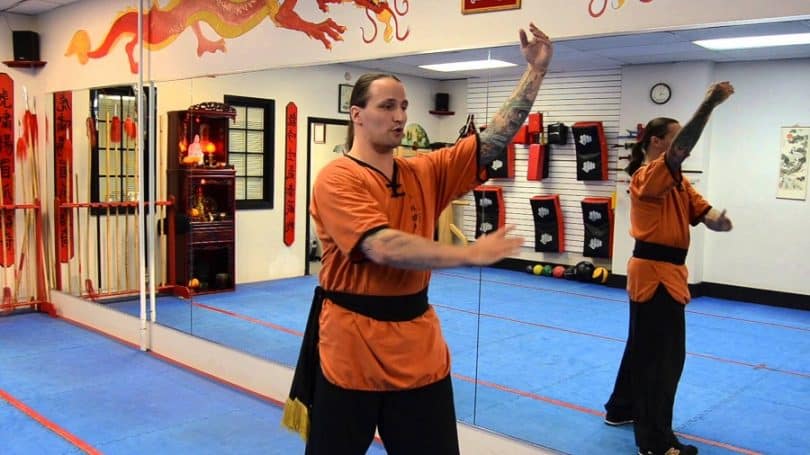
This posture:
- Builds muscles in your legs because you’re only standing on one. This helps you cover bigger distances on foot without getting tired.
- Builds muscles in your arms, getting stronger for better grips. You’ll also become stronger for camp activities such as chopping firewood.
- Creates a stronger core to improve your balance.
- Since your arms move differently, you become better coordinated and learn to use your limbs independently.
Making Tai chi work for you
As a conclusion, Tai chi has a plethora of benefits you can easily notice from merely studying some of the most common katas it employs. Even though you may not end up a martial art expert who can fight off bad guys with his badass stare, you’ll still learn to become more grounded, relaxed, strong and centered. And there’s no denying those are all important abilities in the wilderness.
[the_ad_placement id=”in-text-3-type-r”]In this article we’ve only reviewed three Tai chi movements, but there are a whole lot more for you to experiment with. So let us know what your favorites are, and how you feel them working on your body.
For other self-defense tips and tricks https://survival-mastery.com/skills/defence/self-defense-techniques.html, see our article to find out more.





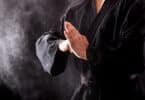
The impact Tai Chi has on my life is overwhelmingly positive. I work a lot and stress used to slowly start to eat me alive.
When I started practicing Tai Chi I used it just for one hour a day because my work schedule already left me with only 6 hours free during the time. It had a lovely effect and helped me achieve balance. I would recommend it to everyone.
Thank you Joseph for sharing your opinion with us.
I learned Tai Chi during my short study in China it was a very short time so I could only learn Chen style. However, you would not be able to benefit from it in a combat. However, it can help you avoid a combat or escaping the situation. It is great cross-training for body awareness or to keep moving if you get injured. Most importantly, it keeps you stress-free and healthy.
According to my research, the oldest style of tai chi is the chen, and it can be very martial. In my point of view, it is the only true tai chi. This style is simply awesome! It’s a great technique for mental levels and helps you to be stress-free. Also, it is a great technique for self-defense.
The saddest thing is that it is very hard to find a knowledgeable Tai Chi teacher these days, most of them are just gymnastics.
Thank you for sharing your opinion with us.